Your vehicle’s radiator plays a crucial role in maintaining the engine’s optimal temperature. As the heart of your car’s cooling system, it ensures that the engine doesn’t overheat, preventing serious damage. However, like any mechanical component, radiators can fail over time. Being aware of the signs of radiator failure can save you from costly repairs and keep your vehicle running smoothly. Here are some of the most common indicators that your radiator may be on its last legs.
- 1. Overheating Engine
- 2; Coolant Leaks
- 3. Low Coolant Levels
- 4. Discolored or Rusty Coolant
- 5. Unpleasant Odor
- 6. Steam or Smoke
- 7. Strange Noises
- 8. Hose Issues
- Understanding Your Radiator: Maintenance Tips
- 1. Regular Inspections
- 2. Check Coolant Levels
- 3. Flush the Radiator
- 4. Inspect Hoses and Connections
- 5. Monitor Temperature Gauge
- 6. Professional Servicing
- When to Seek Help
- Understanding Radiator Maintenance: Best Practices
- 1. Schedule Regular Coolant Flushes
- 2. Use the Right Coolant
- 3. Inspect the Radiator Cap
- 4. Monitor Engine Temperature
- 5. Check for Blockages
- When to Replace Your Radiator
- 1. Age of the Radiator
- 2. Persistent Leaks
- 3. Severe Corrosion
- 4. Diminished Cooling Efficiency
- Final Thoughts: Stay Ahead of Radiator Issues
1. Overheating Engine
One of the most obvious signs of a failing radiator is an overheating engine. If your temperature gauge constantly rises into the red zone, it’s time to take action. An overheating engine can lead to severe damage, so don’t ignore this warning. Check your radiator for leaks or clogs that may be preventing it from effectively dissipating heat.
2; Coolant Leaks
Spotting puddles of coolant under your vehicle is a clear sign that something is wrong. Coolant leaks can occur due to a damaged radiator, hose, or connection. If you notice green, orange, or pink liquid pooling beneath your car, investigate immediately. Regularly checking coolant levels can help you monitor this issue and address it before it escalates.
3. Low Coolant Levels
If you find yourself constantly having to refill your coolant, it’s a sign that there could be an issue with your radiator or cooling system. Low coolant levels can lead to overheating and other serious problems. Inspect the system for leaks or blockages that may be causing the coolant to escape.
4. Discolored or Rusty Coolant
Your coolant should be a bright color, typically green or orange. If you notice that it has turned rusty or brown, this could indicate corrosion inside your radiator. This corrosion can lead to blockages, reducing the radiator’s efficiency and leading to potential failure.
5. Unpleasant Odor
A sweet, syrupy smell could mean that coolant is leaking somewhere in your engine. If you detect this odor, it’s essential to check your radiator and the surrounding areas for leaks. Ignoring this sign can lead to serious engine problems and costly repairs down the line.
6. Steam or Smoke
Seeing steam or smoke coming from under the hood is a serious red flag. This often indicates that the engine is overheating, which could be due to radiator failure. If you encounter this situation, pull over immediately and turn off the engine to prevent further damage.
7. Strange Noises
Unusual sounds, such as gurgling or bubbling, can suggest that air is trapped in the cooling system, which may be due to a failing radiator. This can hamper the radiator’s ability to circulate coolant properly, leading to overheating and other issues.
8. Hose Issues
Inspect the hoses connected to your radiator for any signs of wear or damage. Cracked, swollen, or leaking hoses can impede the flow of coolant and lead to radiator failure. Regularly checking these components can help you catch issues before they escalate.
Recognizing the signs of a failing radiator is crucial for maintaining your vehicle’s health. Regular maintenance and inspections can help prevent radiator issues from becoming a major problem. If you notice any of the signs mentioned above, it’s wise to consult a professional mechanic to diagnose and rectify the issue before it becomes a costly repair. Keep your engine cool, and it will keep you moving!
Understanding Your Radiator: Maintenance Tips
To ensure your radiator functions optimally, regular maintenance is key. Here are some practical tips to keep your cooling system in check:
1. Regular Inspections
Make it a habit to visually inspect your radiator and its components regularly. Look for signs of wear, leaks, or corrosion. A quick glance can save you from more significant issues down the line.
2. Check Coolant Levels
Keep an eye on your coolant levels. Most vehicles have a minimum and maximum line on the reservoir. If levels drop below the minimum, top up with the appropriate coolant mixture to prevent overheating.
3. Flush the Radiator
Over time, debris and sediment can build up in your radiator. Flushing the radiator every few years can help eliminate these deposits, improving efficiency and preventing blockages.
4. Inspect Hoses and Connections
Examine the hoses and connections leading to and from the radiator for any signs of cracking or wear. Replacing old or damaged hoses can prevent leaks and ensure proper coolant flow.
5. Monitor Temperature Gauge
Your vehicle’s temperature gauge is a vital tool. If it consistently reads higher than normal, investigate immediately. Ignoring this could lead to catastrophic engine failure;
6. Professional Servicing
While some maintenance tasks are straightforward, others may require professional assistance. Schedule regular check-ups with a trusted mechanic who can assess your radiator and overall cooling system.
When to Seek Help
Even with diligent care, you may encounter issues that require professional intervention. If you experience any of the following, it’s time to consult a mechanic:
- Persistent overheating even after coolant top-ups.
- Visible leaks that cannot be traced back to hoses or connections.
- Unusual noises coming from the engine bay.
- Steam rising from under the hood during operation.
Your radiator is an indispensable part of your vehicle’s health. By staying vigilant and proactive with maintenance, you can extend its lifespan and ensure your engine runs smoothly. Recognizing the early signs of radiator failure and responding promptly can save you from significant expenses and keep your car on the road longer. Take care of your radiator, and it will take care of you!
Understanding Radiator Maintenance: Best Practices
In light of the signs indicating potential radiator failure, it’s essential to adopt a proactive approach to maintenance. Regular care not only extends the life of your radiator but also enhances overall vehicle performance. Here are some best practices to ensure your cooling system remains in peak condition:
1. Schedule Regular Coolant Flushes
Over time, coolant can become contaminated with rust, dirt, and debris. Flushing your cooling system every two years or as recommended by your vehicle’s manufacturer helps eliminate these contaminants and maintains efficient heat transfer. This simple procedure can prevent internal corrosion and keep your radiator running smoothly.
2. Use the Right Coolant
Not all coolants are created equal. Ensure you’re using the correct type for your vehicle, as specified in your owner’s manual. Mixing different types of coolant can lead to chemical reactions that cause sludge buildup, clogs, and corrosion. Stick to what works best for your engine’s design.
3. Inspect the Radiator Cap
The radiator cap is a small but critical component that maintains the pressure in the cooling system. A faulty cap can lead to coolant leaks and overheating. Regularly inspect the cap for cracks or wear, and replace it if you notice any damage. A functioning cap helps ensure that your radiator operates at the right pressure, which is essential for effective cooling.
4. Monitor Engine Temperature
Keep a close eye on your engine’s temperature gauge. If you notice fluctuations that deviate from the norm, it could indicate a problem with the radiator or cooling system. Addressing these issues promptly can prevent severe engine damage and costly repairs.
5. Check for Blockages
Debris can accumulate in and around the radiator, obstructing airflow and reducing cooling efficiency. Regularly check for leaves, dirt, or other obstructions on the radiator’s exterior. You can gently clean the fins with a soft brush or compressed air to maintain optimal airflow.
When to Replace Your Radiator
Despite your best maintenance efforts, radiators can wear out over time. Knowing when to replace your radiator is crucial for preventing engine damage. Look for the following signs to determine if it’s time for a replacement:
1. Age of the Radiator
If your vehicle’s radiator is over ten years old, it may be nearing the end of its lifespan. Even with proper maintenance, older radiators are more susceptible to corrosion and failure. Consider replacing it as a preventive measure if you’re driving an older vehicle.
2. Persistent Leaks
While minor leaks can sometimes be repaired, persistent leaks, especially if they are coming from the radiator itself, often indicate that it’s time for a replacement. Repairing a radiator can sometimes be more expensive than replacing it, depending on the severity of the damage.
3. Severe Corrosion
If you notice significant rust or corrosion on the radiator, it’s a strong indicator that it may be failing. Corrosion can lead to leaks and reduced efficiency, so it’s best to replace a heavily corroded radiator before it causes more extensive engine issues.
4. Diminished Cooling Efficiency
If you find that your engine is consistently running hotter than normal despite having sufficient coolant, your radiator may not be functioning effectively; In such cases, a replacement may be necessary to restore proper cooling and protect your engine.
Final Thoughts: Stay Ahead of Radiator Issues
Maintaining your vehicle’s radiator is not just about prevention; it’s about ensuring the longevity and reliability of your engine. By understanding the signs of radiator failure, implementing routine maintenance practices, and knowing when to replace your radiator, you can avoid many of the pitfalls associated with cooling system issues. A well-maintained radiator will not only keep your engine cool but also enhance your vehicle’s performance, making every drive a smooth and enjoyable experience.
So, keep an eye on your temperature gauge, regularly check coolant levels, and don’t hesitate to consult a professional if you suspect something is amiss. Your engine will thank you for it!

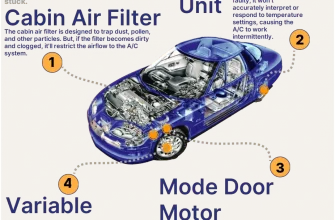
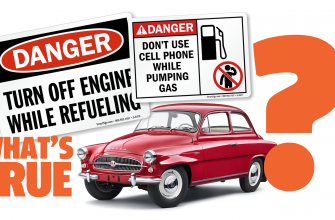
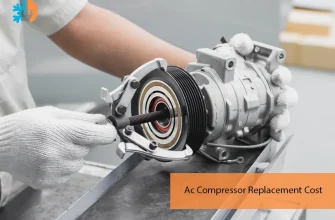

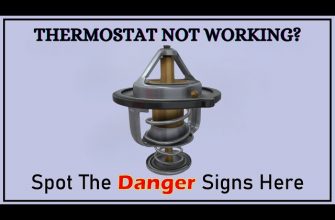

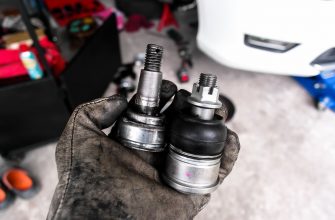
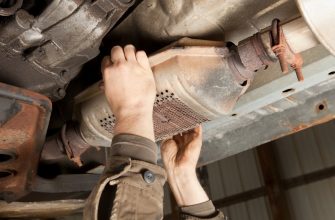
Very informative article! I appreciate the clear explanations of symptoms and what to look for in a failing radiator.
I never knew how crucial my radiator was until reading this. The tips for spotting issues are super helpful!
Great insights into radiator issues. The overheating engine warning is something I will definitely keep an eye on!
This article provides essential information about radiator maintenance! I learned so much about the signs of failure. Highly recommend!
The tips provided are practical and easy to follow. I’m grateful for the advice on checking for discoloration in coolant.
Fantastic read! The section on coolant leaks was especially eye-opening. I’ll be checking my car more often now.
I found this article extremely useful. Understanding the importance of coolant levels can save a lot of trouble down the road.